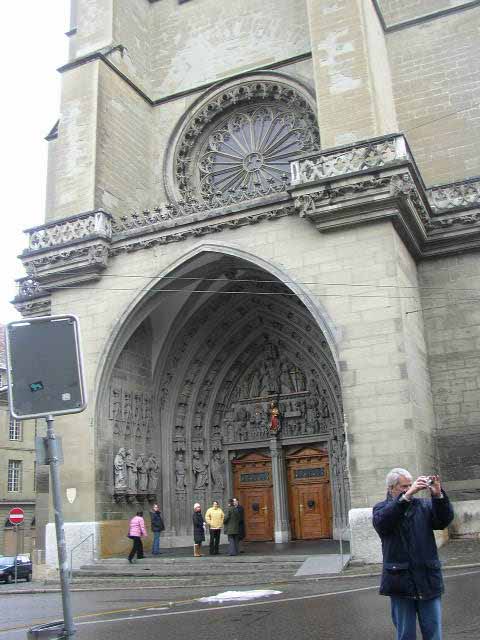Fribourg (German: Freiburg or Freiburg im Üechtland, often Fribourg; Italian: Friburgo or Friborgo) is the capital of the Swiss canton of Fribourg and the district of Sarine. It is located on both sides of the river Saane/Sarine, on the Swiss plateau, and is an important economic, administrative and educational center on the cultural border between German and French Switzerland (Romandy). Its Old City, one of the best maintained in Switzerland, sits on a small rocky hill above the valley of the Sarine.
View of Fribourg
Transport
Roads
The town lies on the old main road from Bern to Vevey, and acts as an access point to Payerne, Murten and Thun. The connection to the Swiss motorway network was established in 1971 with the opening of the A12 motorway from Bern to Matran, which was extended in 1981 to Vevey. The Swiss east-west A1 from the West Bern bypasses the town to the north and west, only affecting the communities of Tälchen and Chamblioux. The access points of Fribourg-Sud and Fribourg-North are each about 3 km from the city centre.
Valley of the Sarine near Fribourg
Railway
The connection to the railway network, was accomplished in several stages from 1860. Initially, the railway line from Bern to Fribourg opened on 2 July 1860 with a temporary terminal at Balliswil about 4 km north of the city, as the Grandfey Viaduct over the Saanegraben was not yet finished. On 4 September 1862, the whole of the line from Balliswil to Lausanne via Fribourg opened, with a temporary station at Fribourg, until the permanent building opened in 1873. A line to Payerne opened on 25 August 1876 and to Murten on 23 August 1898.
Fribourg Tour de Bourguillon
Public
A funicular railway has been operated from the Neuveville district to the upper city since 1899 by the sewage works. From 1897 to 1965 in Fribourg there was a 6-kilometre (3.7 mi) long tram network in operation, with the trams replaced from 1949 with trolley buses. The current bus network is now operated by the Transports publics Fribourgeois, with connections to Bulle, Avenches, Schmitten, Schwarzenburg and in the tourist region Schwarzsee.
Fribourg City Hall
Airport
The regional Bern-Belp Airport is an hour away from the area.
Maigrauge Abbey in Fribourg
Culture and tourism
Fribourg is a day trip destination for tourists who want to visit the sights of the city. These include the historic Old City with its Gothic Cathedral of Saint Nicholas renowned for its stained glass windows designed by Józef Mehoffer, and the museums. The Natural History Museum was founded in 1873, and is now located in the natural sciences building at the University. The Museum of Art and History, located in the Ratzéhof since 1920, has exhibits on ancient and early history, sculpture and paintings, traditional tin figures, arts and crafts, as well as money and graphic collections. In the cathedral, a treasure chamber has been on display since 1992. Other museums include the Swiss Museum of Marionnettes, the Swiss Sewing Machine Museum, the Gutenberg Museum and a beer museum.
Saane/Sarine river near the city
Cultural experiences include the festival of religious music, the international folklore convention, the jazz parade, an international film festival and Cinéplus (since 1972).
Zaehringen bridge crossing the Sarine
Like its sister city Bern, Fribourg has preserved its medieval center as a whole that is now one of the largest in Europe. It is located on a spectacular peninsula, surrounded on three sides by the Saane/Sarine river. The architecture of the Old City date primarily from the Gothic period; it was built predominately before the 16th century. Most houses are built of the local molasse stone. Consisting of the neighborhoods Bourg, Auge and Neuveville, its old town is rich in fountains and churches dating from the 12th century until the 17th century. Its cathedral, reaching 76 metres (249 ft) in height, was built between 1283 and 1490. The fortifications of Fribourg form the most important medieval military architecture of Switzerland: 2 kilometres (1.2 mi) of ramparts, 14 towers and one big bulwark. The protections are especially well preserved east and south of the city.
TPF trolley bus in Fribourg
Fribourg Hôtel Ratzé
 22:09
22:09
 homesweethome
homesweethome











































 Posted in:
Posted in: 








0 意見:
Post a Comment